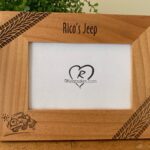I. Benefits of Using Upcycled Flannel for Quilt Blocks
II. Tools and Techniques for Cutting Quilt Blocks from Flannel
III. Tips for Preparing and Sewing Upcycled Flannel Quilt Blocks
Quilting is a wonderful hobby that allows for creativity and expression. One trend that has gained popularity over the years is using upcycled materials—especially flannel. If you’ve ever wondered why you should consider upcycled flannel for your quilt blocks, you’re in for a treat! Let’s dive into the benefits of this cozy fabric.
1. Eco-Friendly Choice
One of the most significant advantages of using upcycled flannel is its positive impact on the environment. By choosing to repurpose old flannel, you are:
- Reducing textile waste that would otherwise end up in landfills.
- Conserving resources by minimizing the need for new fabric production.
- Encouraging a sustainable crafting culture that values resourcefulness.
When you create something beautiful from old fabric, you not only give it a new life but also contribute to a greener planet.
2. Unique Character and Texture
Have you ever noticed how upcycled flannel often comes with its own unique stories and character? Each piece carries a history, whether it’s a beloved old shirt or a cozy blanket from years past. This means:
- Your quilt blocks will have a one-of-a-kind look that sets your project apart.
- You can incorporate a variety of patterns, textures, and colors, making your quilt visually exciting.
- The softness of flannel provides a warm, inviting texture that’s perfect for cuddly quilts.
3. Cost-Effective Crafting
Let’s face it—quilting can be an expensive hobby. However, using upcycled flannel can help keep your costs down. Here’s how:
- You can often find discarded flannel at thrift stores, garage sales, or even in your own closet, allowing you to source materials at little to no cost.
- By repurposing fabric you already have, you can save money that can be spent on other quilting supplies like batting or thread.
- Creating quilt blocks from upcycled flannel allows you to experiment without the fear of wasting expensive materials.
4. Versatility for Various Projects
Upcycled flannel is not only great for quilt blocks, but its versatility means you can use it for a wide range of projects, such as:
- Pillows and cushions that match your quilt.
- Soft toys or stuffed animals for gifts.
- Table runners or wall hangings to showcase your quilting skills.
This fabric can be a fantastic way to create matching home décor pieces, making your crafting experience even more rewarding.
5. Community Connection
Finally, upcycling flannel can foster a sense of community. When you share your projects made from old materials, you inspire others to do the same. Consider:
- Joining quilting groups or online communities focused on upcycling.
- Participating in fabric swaps to find unique flannel pieces.
- Hosting workshops to teach others about the benefits of using upcycled materials.
In this way, you not only hone your skills but also connect with like-minded individuals who share your passion for crafting and sustainability.
So, whether you’re an experienced quilter or just starting out, think about incorporating upcycled flannel into your next project. Not only will you create something beautiful, but you’ll also make a positive impact on the environment while enjoying the unique charm of each piece of fabric.
Tools and Techniques for Cutting Quilt Blocks from Flannel
Cutting quilt blocks from upcycled flannel can be a delightful experience, especially when you have the right tools and techniques at your disposal. Flannel is soft and cozy, making it a fantastic choice for quilts, but it does require a bit of special handling. Let’s dive into the essential tools and some handy techniques that will help you create beautiful quilt blocks with ease!
Essential Tools You’ll Need
Before you start cutting, gather these tools to make your life easier:
- Rotary Cutter: This is a must-have for clean, precise cuts. A rotary cutter will slice through flannel smoothly, ensuring that your edges are straight and ready for sewing.
- Cutting Mat: Pair your rotary cutter with a good quality cutting mat. This protects your surfaces and helps you make accurate cuts without damaging your tools.
- Ruler: A quilting ruler with clear measurements is essential. It will guide your cuts and help maintain the right dimensions for your blocks.
- Fabric Scissors: While a rotary cutter is preferred, having a pair of sharp fabric scissors on hand is helpful for snipping threads or cutting out small pieces.
- Marking Tools: Use fabric chalk or a water-soluble marker to mark cutting lines. This ensures accuracy, especially on vibrant flannel that might make it hard to see the lines.
Preparation is Key
Once you have your tools ready, it’s time to prepare your flannel. Here’s how you can ensure your fabric is in tip-top shape:
- Wash and Dry: Always pre-wash your flannel to remove any chemicals and to allow for any potential shrinkage. It will help your quilt maintain its shape after the first wash!
- Ironing: Flannel can be a little wrinkled after washing. Give it a gentle press with an iron set to a low temperature to flatten out creases. This step is crucial for accurate cutting.
- Lay Out Your Fabric: Spread your flannel on the cutting mat, ensuring it’s flat and smooth. You can fold it if you’re cutting multiple layers, but make sure they align perfectly.
Cutting Techniques
Now comes the fun part—cutting your quilt blocks! Here are some tips to help you along the way:
- Measure Twice, Cut Once: Always double-check your measurements before cutting. It’s better to take a moment to ensure accuracy than to waste fabric later.
- Cut Straight Lines: Use your ruler to guide your rotary cutter or scissors. Keep your hand steady for a clean cut, and make sure to apply even pressure throughout.
- Mind Your Grain: Pay attention to the grain of the fabric. Cutting against the grain can lead to distortion. Aim to cut along the grain for the best results.
With these tools and techniques in hand, you’ll be well on your way to cutting perfect quilt blocks from upcycled flannel. So, roll up your sleeves, grab your tools, and let your creativity flow!
Tips for Preparing and Sewing Upcycled Flannel Quilt Blocks
Welcome to the cozy world of quilting with upcycled flannel! It’s a fantastic way to create something beautiful while giving new life to fabric that might otherwise go to waste. Let’s dive into some friendly tips that will help you prepare and sew your quilt blocks with flair and ease.
1. Prepping Your Flannel
Before you start sewing, it’s essential to prepare your flannel properly. Here are a few steps to follow:
- Wash and Dry: Always start by washing and drying your flannel. This step helps remove any chemicals and pre-shrinks the fabric. Trust me, you don’t want your lovely quilt to shrink after all that hard work!
- Pressing: After washing, give your fabric a good press. Flannel can be a bit wrinkly, and you’ll want a smooth surface to work with. Use a medium heat setting, and if you find it’s still a bit stubborn, a little steam can work wonders.
2. Cutting Your Quilt Blocks
Now that your flannel is prepped, it’s time to cut those quilt blocks! Here’s how to do it efficiently:
- Measure Twice, Cut Once: This old adage rings true—double-check your measurements before cutting. Accuracy is key to achieving that perfect quilt block!
- Use the Right Tools: For flannel, a rotary cutter works beautifully. It glides through the fabric with ease, giving you clean edges. Don’t forget a cutting mat and a clear ruler to guide your cuts!
- Cut in Layers: If you’re cutting multiple pieces, don’t hesitate to layer your flannel. Just make sure they’re aligned properly—this will save you time and give consistent results.
3. Sewing Your Quilt Blocks
With your blocks cut, let’s move on to the sewing! Here are some handy tips to ensure a smooth process:
- Use the Right Needle: A universal or a quilting needle (size 80/12 or 90/14) works best for flannel. This will help you avoid skipped stitches and ensure a smoother sewing experience.
- Adjust Your Tension: Flannel is thicker than standard cotton, so you might need to adjust your sewing machine’s tension. Test on a scrap piece first to find the sweet spot!
- Go Slow: Don’t rush—take your time while sewing. Flannel can be a bit slippery, and going slow helps you maintain control and achieve precise seams.
- Press as You Go: After sewing your seams, press them open or to one side as you go. This will help your quilt blocks lay flat and give your quilt a professional finish.
4. Finishing Touches
Once your blocks are sewn together, it’s time to add those finishing touches! Consider the following:
- Topstitching: Adding a decorative topstitch can give your quilt blocks a lovely finished look while also providing extra durability.
- Choose a Backing: When it comes to backing your quilt, consider flannel for a cozy finish. It’s a great way to tie your design together!
So there you have it! With these tips, you’re well on your way to creating beautiful upcycled flannel quilt blocks that are not only functional but also full of personality. Happy quilting!










Comments